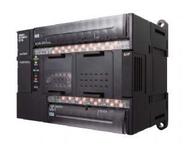 With the development of the era, the automation industry is developing faster and faster, and the application of small-scale PLCs must be applied more widely in more and more industries. Small PLC products are more diversified and the functions and advantages of the small PLCs are numerous. It can be seen that the development of small PLCs is very impressive.
With the development of the era, the automation industry is developing faster and faster, and the application of small-scale PLCs must be applied more widely in more and more industries. Small PLC products are more diversified and the functions and advantages of the small PLCs are numerous. It can be seen that the development of small PLCs is very impressive. From a technical point of view, ensuring the high reliability of PLC in a complex industrial environment is still a technical problem faced by many new manufacturers that have joined the field of small PLCs. From an innovation perspective, continuous large-scale investment in R&D is a guarantee of continuous innovation to meet the increasing demands of the market, and this investment is a big test for many manufacturers. From the point of view of market development, large manufacturers have distinctly strong industries and fields, possess core technologies of a dominant industry, mature solutions, and sales networks suitable for industry and market development. After more than a decade of market trials, Siemens PLCs have been widely recognized by the market for their brands and services. This depends not only on market promotion, but also on excellent product quality and complete solutions.
In addition to reliable stability, cost-effectiveness and other factors, automated product users have been paying more and more attention to project maintenance costs for several years. Now Chinese users have included maintenance costs in the cost of the entire automation system. Siemens small PLCs provide users with flexible and diversified remote service solutions that can be based on fixed telephones, networks, and wireless communications, saving customers considerable costs for later maintenance. In order to further reduce costs for the majority of users, in 2005, Siemens successfully completed the local production of the S7-200 PLC. At the same time, it also localized the production of the S7-200 PLC-specific touch screen KTP-178 and the four-line Chinese text display TD400, further enhancing the Siemens miniaturization. The overall cost-effectiveness of the PLC's total solution has reached the level of a medium-sized machine of the same brand and supports various communication protocols such as PPI, RS-485, -DP, and Ethernet, ensuring a completely seamless connection.
I think the market share of small PLCs will continue to grow rapidly. With China's accession to the WTO, exports have increased year by year, and China is gradually becoming a global manufacturing base for machinery and equipment, which has enabled domestic OEMs to develop rapidly. In order to avoid fierce competition and pursue higher profits, some OEMs will use small PLCs instead of relays or SCM control solutions. Moreover, small-scale PLCs are no longer just single-station single-station control, and the trend of factory informatization will enable more production equipment to be networked and centralized monitoring. The open platform of Siemens Small PLCs offers the possibility of plant production equipment networking and plant informationization, enabling customers to network without additional hardware investment.
DC 46" Tower Fan
CIH Hong Kong Ltd. , https://www.dragon-town.com
